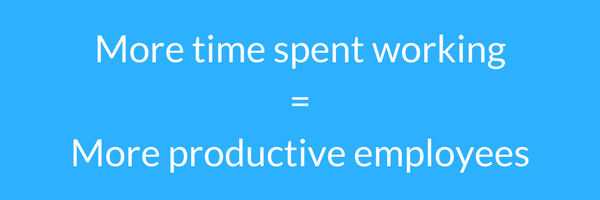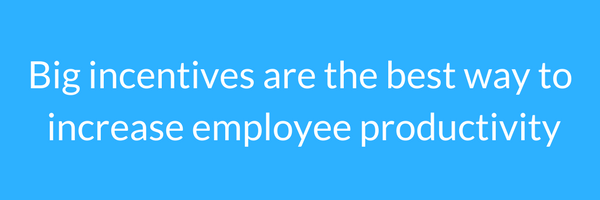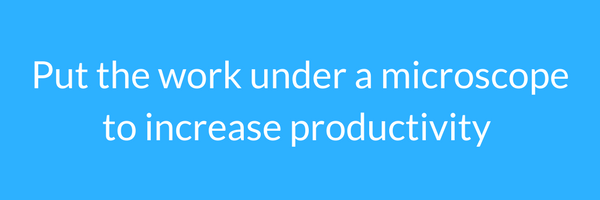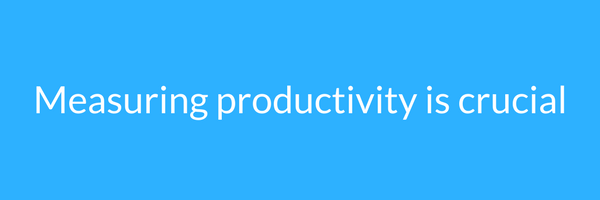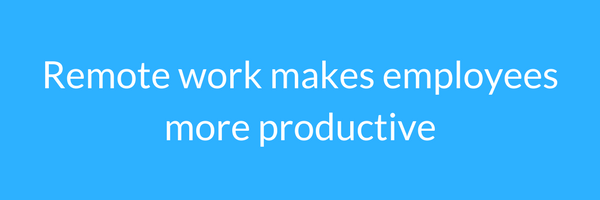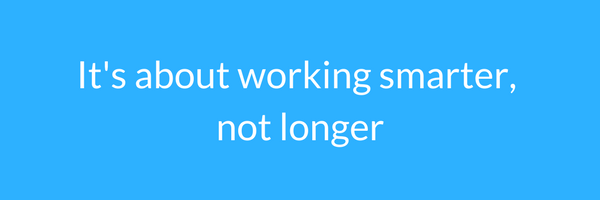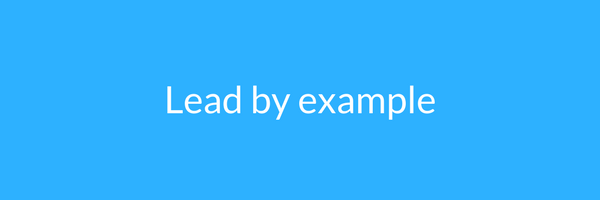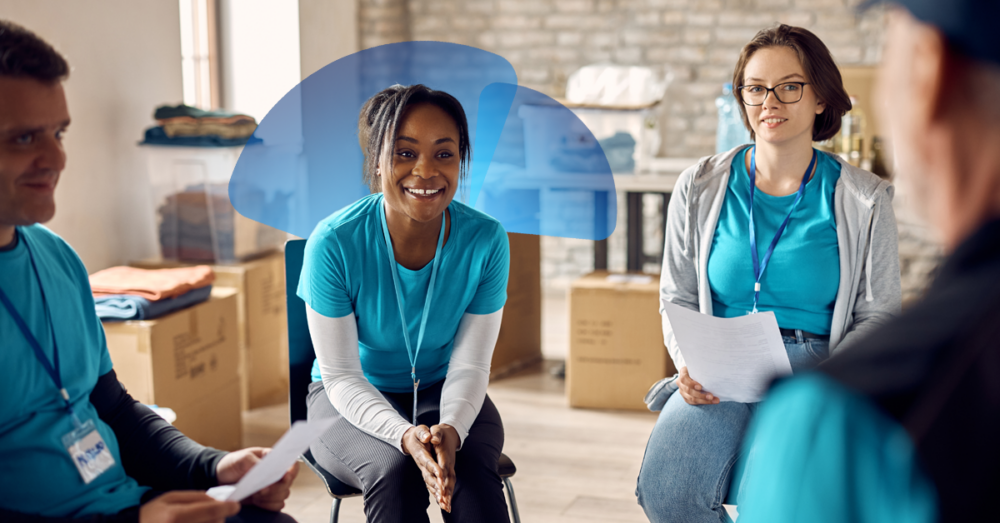Employee Productivity: Myths, Truths, and New Ideas
Table of Contents
As it turns out, the history of employee productivity basically starts with one man: Frederick Winslow Taylor. An American engineer, Taylor became the first person to systematically examine employee efficiency. Most famously, he used a stopwatch to time workers shoveling steel, breaking the task into its smallest components so he could figure out the most efficient way to do each.
(At age 18, he also decided not to attend Harvard, and chose the life of a machine apprentice instead. But that’s a different story.)
While many of our beliefs about productivity come from Taylor, we’ve recently been able to learn more about how it all works. And some of these realizations may cause us to revisit some long-held assumptions about employee productivity!
What follows is a discussion of myths, truths, and new ideas about employee productivity in the modern world.
Employee Productivity Myths
Today Americans are working more hours than ever. But it’s not clear that we’re being more productive.
Why not? Well, research suggests that the secret to increasing productivity may in fact not be working more, but working less.
It turns out that our puny little brains can only focus on single tasks for so long. And too much focusing leaves our brains nearly depleted of attention span. Experts call this “attention hangover.” (You might know it as “the 30 minutes I spent drooling on my desk.”)
How to avoid this scenario? Taking breaks! Yes, research shows that we focus better by interspersing our work with short, rejuvenating breaks.
In fact, studies have shown that encouraging workers to take breaks and vacations, or even limiting the amount of time they spend working, can actually make people more productive. In the 1920s, Henry Ford experimented with this idea, dropping the number of hours his employees worked per week from 48 to 40. He found zero loss in productivity, but a huge gain in happiness in his workers.
Counterintuitive? Yes. True? Absolutely.
Another common myth is that big incentives – raises in salary, mostly – end up being the main drivers of employee productivity.
This is often true, to a point. But the larger truth is that after a short boost in productivity, employees tend to fall back into the same work rhythms they had before.
What works better, it turns out, are small, more frequent rewards. This can be a regular performance bonus. Or changing up the office perks. Or something as simple as remembering to tell workers, often, that you appreciate how hard they’re working. (You’re doing that already, right?)
Even more than salary, it’s these little things that keep employees feeling validated. And a validated employee is a productive employee.
While Taylor may have raised productivity by timing each component of the work with a stopwatch, we now know how important culture is for productivity.
So instead of focusing solely on making the work itself more efficient, good companies are figuring out how to increase general well-being, knowing that increasing employee satisfaction is a surefire way to increase productivity.
What does this mean? Things like helping employees stay healthy. Extending benefits to families. Encouraging camaraderie at work by hosting happy hours or fun get-togethers.
Employee Productivity Truths
This should be a no-brainer, but it’s often not: if you want to improve employee productivity, you have to measure employee productivity. That’s the only way we can know what’s working well, and what isn’t.
Time tracking software, in particular, can help us pinpoint where we need to improve. It can tell us which tasks we’re devoting too much time to, and which ones too little.
But time tracking also offers a number of additional productivity benefits, including improving employee utilization, reducing administrative costs, and knowing when to hire a new full-time or temporary employee.
Regardless of whether or not your organization tracks time, there’s no way to improve anything in your business without first measuring it.
Imagine driving in the Indianapolis 500. Except while everyone else is zooming around in a hot rod, you’re driving a 10-year-old Jalopy.
Sound familiar? If you want to be productive, you need the right technology. Old computers, software from years ago, a spotty CRM: these things hold people back.
Frederick Winslow Taylor figured this out, too. In one experiment, he gave workers in a steel plant eight different kinds of shovels to try out. Once workers figured out which style of shovel worked best for each job, they almost quadrupled their productivity!
The lesson? Productivity means giving the workers the right tools for the job.
In 2013, Marissa Mayer, CEO of Yahoo!, stirred controversy by banning telecommuting for her employees.
Mayer garnered plenty of criticism for this decision, and her critics may have had a point: studies show that allowing employees to work from home increases productivity. As a bonus, it also boosts job satisfaction!
While remote work may once have been difficult to justify, today’s technology makes physical distance a non-issue. And managing remote teams has become much easier, as video conferencing, mobile chat apps, and easy-to-use mobile devices bring physically distant employees closer together than ever before.
New Ideas for a Productive Workforce
We know that happier, engaged employees tend to be the most productive. And that employees tend to be happiest when given responsibility for their work.
How do to this? One way is to start evaluating employees based on whether their deliverables are met, not how they’re met. Instead of mandating prescribed amounts of time for various tasks, give employees jobs and help them figure out the best way to get those jobs done.
Here’s a question: if an employee consistently produces high quality work, and does so on time, does it matter if he or she spends part of their day on social media? Maybe not.
Often managers imagine that increasing productivity is a top-down process: your job as a manager is to help your employees be more productive.
This is true, of course, but at the same time employees are looking to you to show them how to work. Instead of simply helping your employees become more productive, become more productive yourself, then share your methods with your employees.
Have you tracked your own time at work? Have you A/B tested your own workflow to see what makes you more productive? Have you worked remotely for a week and produced exceptional results?
Lead and your employees will follow! Especially if you communicate openly and honestly about your successes and failures. By engaging them and have a transparent discussion, your employees will be more likely to respond in kind. (Cue “Man in the Mirror.”)
A sick employee is a less productive employee. Period.
Given this, one simple way to increase productivity is to work on keeping your employees healthy, both physically and emotionally. You can do this in all sorts of ways: provide incentives for exercising. Provide robust health insurance. Offer healthy snacks. Incorporate fun outdoor activities into team-building exercises.
Whatever the costs of keeping your employees healthy and fresh are, they’ll be outweighed by the increases in productivity you’ll see.
Of course, this is just a handful of ideas. How will you increase productivity in your organization? The science of employee productivity may have started with a stopwatch, but no one knows for certain what the next major breakthrough will be.



